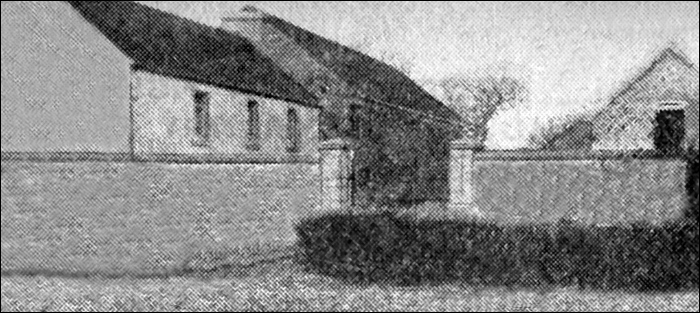West Cork IRA Column Escape British Advance
Burgatia House, near Rosscarbery.
By February 1921, one of the few outlying RIC barracks still occupied in county Cork was at Rosscarbery, most having been evacuated following attacks on them by the IRA. Rosscarbery barracks was occupied by a strong force of RIC and Black and Tans. Commandant Tom Barry, came to the decision that the time was right for an attack on the building. The plan was that West Cork flying column would occupy a large house near Rosscarbery while preparing for the attack.
The column arrived at Burgatia House which was owned by large farmer and landowner Thomas Kingston, a Justice of the Peace. Openly hostile to the IRA, Kingston was regularly in contact with the British authorities. His house was situated about one mile east of Rosscarbery, and about 200 yards up an avenue from the main road. The house was swiftly surrounded and occupied by the volunteers. They rested until later in the morning and when Kingston's employees arrived, they were arrested and confined to the house. Kingston himself was, of course, under close arrest all the time. About mid-morning a problem arose with the arrival of a postal worker whose detention for any length of time would arouse suspicion. Having given an undertaking that he would not report the occupation of Burgatia House to the authorities, he was released.
However, not long afterwards, a local volunteer by the name of Sonny Maloney reported that the released official had gone straight to the RIC barracks at Rosscarbery and had remained inside. It was also reported that British military were arriving in numbers from Skibbereen and Clonakilty. No sooner had the column adopted defensive positions than the approach of the enemy was signalled. The volunteers were in a very difficult position. They were one mile from Rosscarbery which was now occupied by troops as well as police. At their backs was the sea. The only other way out to the east would probably be held by troops coming from Clonakilty. And it was at least four hours before darkness would set in.
Within moments a volley was fired from the road, but the IRA did not reply. The Black and Tans advanced a short distance up the avenue. Another volley was fired at the house but he volunteers remained crouched in their positions. The military then began to advance cautiously, firing as they came. Suddenly the order was given and the defenders opened fire. The startled British immediately broke ranks and ran.
After a few minutes of rapid fire, the order was given for one IRA section to move to the east and hold the main road until the remainder of the volunteers had evacuated the house. As the enemy was retreating, the IRA moved quickly across the road and headed in an easterly direction. They marched for about three miles before halting. The main part of the column continued on to billet in the north-east, but section returned to Rosscarbery which they entered after nightfall. The main purpose for this was to defend the local population in case of British reprisals. The IRA fired on enemy posts in the town for some time before eventually moving off unopposed to join the remainder of the flying column.




